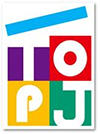- TOP
- nihongo-test
Information Regarding Japanese Tests

What is Required about Japanese Tests?
- 1. Japanese tests are carried out to test the language proficiency of non-native speakers to certify their abilities in the fields of reading, writing, speaking, and listening.
- 2. If you wish to study Japanese in Japan, you are required to have passed the JLPT level N5 or N4.
To enroll in higher education facilities, such as universities and specialty schools,N2 level is the minimum requirement. - 3. If you wish to study Japanese in Japan, you are required to have passed the JLPT level N5 or N4 or equivalent. To enroll in higher education institutions, such as universities and specialty schools, level N3 or N2 is the minimum requirement.
Kinds of Japanese Tests
The following seven tests can be used as proof of Japanese language ability when entering Japan. We will compare the characteristics of each test.
Japanese Language Proficiency Test
URL: www.jlpt.jp/- Sponsorship
- Japan Foundation/Japan International/Education Association
- Implementation
- International Foundation (Overseas)/Japan International Education Association/Education Association (Japan)
- No. of Annual Examinees
- 600,000
- Available Countries
- 44 prefectures within Japan, 206 cities in 64 countries outside Japan
- Frequency
- Biannually (July and December)
- Examination Fee
- ¥5,500
GNK Life & Business Style Japanese Language
URL: nihon-ken.com- Sponsorship
- Foundation Japan International Human Capital Development Organization
- Implementation
- With The Japanese Test Committee
- No. of Annual Examinees
- 10,000
- Available Countries
- Japan (Tokyo only) and 4 countries outside of Japan
- Frequency
- 4 times a year
(March, May, September, and November) - Examination Fee
- Course B ¥4,000
Course A ¥5,000
J-TEST Practical Japanese Test
URL: j-test.jp/- Sponsorship
- The Japanese Language Examination Committee J-TEST Office
- Implementation
- Kataribun Research, Inc.
- No. of Annual Examinees
- 70,000
- Available Countries
- 14 prefectures within Japan, 5 countries outside Japan
- Frequency
- 6 times a year
(January, March, May, July, September, and November) - Examination Fee
- ¥3,600
BJT Business Japanese Test
URL: www.kanken.or.jp/bjt/- Sponsorship
- Foundation Japan Kanji Aptitude Testing Public Interest
- Implementation
- Japan Kanji Aptitude Testing Public Interest Foundation
- No. of Annual Examinees
- 4,107
- Available Countries
- 7 prefectures within Japan, 22 cities in 6 countries outside Japan
- Frequency
- Biannually
(June and November) - Examination Fee
- ¥7,000
NAT-TEST
URL: www.nat-test.com/- Sponsorship
- Japanese NAT-TEST Steering Committee
- Implementation
- -
- No. of Annual Examinees
- Roughly 4,103
- Available Countries
- Japan and 6 countries outside of Japan
- Frequency
- 6 times a year
(February, April, June, August, October, and December) - Examination Fee
- ¥4,500
TOP-J Practical Japanese Proficiency Test
URL: www.topj-test.org/- Sponsorship
- TOPJ Practical Japanese Proficiency Test Implementation Committee
- Implementation
- -
- No. of Annual Examinees
- 2,000
- Available Countries
- 8 cities in 4 countries outside Japan
- Frequency
- 6 times a year
(January, March, May, July, September, and November) - Examination Fee
- -
STBJ Standard Business Japanese Test
URL: www.ajlea.net/about_stbj/- Sponsorship
- Institute Applied Japanese Education Association
- Implementation
- STBJ Test Affairs Committee
- No. of Annual Examinees
- Not published
- Available Countries
- China only
- Frequency
- 4 times a year
- Examination Fee
- -
Pick up !About GNK Life & Business Style Japanese Language Test
"GNK Life & Business Style Japanese Language Test" is a unique test focusing on Japanese society and culture. We recommend you take this test in order to gain the ability to communicate in Japanese in a wide variety of situations, and to work in Japan.
<Features of GNK Life & Business Style Japanese Language Test>
- 1. The most unique part of this test is that it does not focus solely on language ability, but also tests your ability to live and work in Japan. The GNK is a test to evaluate and judge a wide range of communication skills required for life in Japan.
- 2. The levels correspond to the levels of the JLPT, from N5 to N1, from least to most difficult, so it’s possible for anyone from high school students to university students to business people to test their Japanese levels.
- 3. It gives you a qualification you can put on your Resume/CV to recognize your skills and ability in the workplace.
For Japanese immigration procedures, these test results function as proof of Japanese proficiency. - 4. The exam can be taken 4 times a year.







